Ease of Moving Index Dashboard
Ease of Moving Index is India’s largest-ever mobility survey, covering 50,000+ respondents stratified by gender, disability, and income across 40 cities. The study sets mobility scores and ranks cities on 9 parameters covering 40+ indicators which will be updated regularly in future years. Pune-Pimpri Chinchwad, Mumbai, and Coimbatore top the #EaseOfMoving list in this edition. The 2022 edition also places emphasis on active and shared mobility as a key enabler of clean mobility. The index aims to enable policy makers, urban planners, practitioners, and businesses to improve ease of moving by creating a mobility baseline. Explore the findings and shape future mobility in your city!
Suggested Citation for Dataset: OMI Foundation. (2024, February). Ease of Moving Index Database.
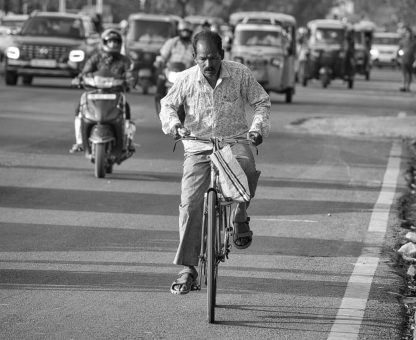


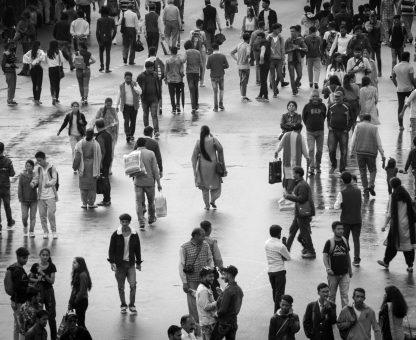




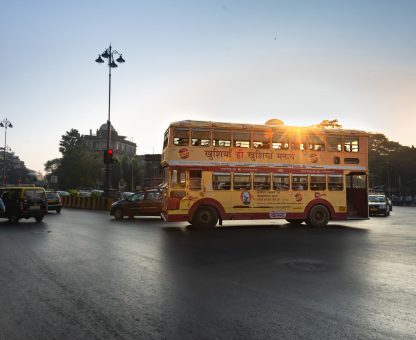






About OMI
OMI Foundation Trust is a policy research and social innovation think tank operating at the intersection of mobility innovation, governance, and public good. Mobility is a cornerstone of inclusive growth providing the necessary medium and opportunity for every citizen to unlock their true potential. OMI Foundation endeavours to play a small but impactful role in ushering meaningful change as cities move towards sustainable, resilient, and equitable mobility systems which meet the needs of not just today or tomorrow, but the day after.
mobility:
Centre for Clean Mobility
Explores the diversity of near- and long-term pathways to clean mobility. It focuses on the use of electric, future fuels, and renewable energy alike within the mobility ecosystem.
Centre for Future Mobility
Envisions a future which meets the aspirations of all in a diverse world, anchored in the paradigms of active, shared, connected, clean, and AI-powered mobility.
Centre for Inclusive Mobility
Ensures the existing and emerging mobility paradigms are Safe, Accessible, Reliable, and Affordable for every user of mobility infra and services, including persons with disabilities, women, LGBTQIA+, children, and the elderly.It further paves the road for the future of work and platform economy to fulfil the modern promise of labour.
What is Ease of Moving Index
Stages Of Developing EoMI
1.Developing the evaluation
framework comprising
parameters and indicators to measure and benchmark
1. Selection of cities based on geographical spread and diversity
2. State capitals, select Union Territories and smart cities were prioritized
1. Primary data:
A. India’s largest mobility survey
B. Focus Group Discussions
2. Secondary data from public sources including city authorities
1. Analysis and synthesis of primary and secondary data
1. Scoring and ranking of cities
1. India Report
2. City Profiles
Ethos of the Ease of Moving index
The Ease of Moving Index framework is derived from the mobility objectives a city could aspire to achieve. What are these mobility objectives?The United Nations notes that sustainable transport is one which is safe, affordable, accessible, efficient, resilient, and minimises carbon and other emissions and environmental impact8. Therefore, safety, affordability, accessibility, efficiency, resilience, and climate action could well be a city’s mobility goals.
Closer home in India, the Prime Minister’s vision for the future of mobility is based on 7 Cs – Common, Connected, Convenient, Congestion-free, Charged, Clean and Cutting-edge.
The 7 Cs of mobility and the mobility goals themselves need to be viewed in the backdrop of a) the existing challenges of rapid urbanisation and unfettered motorisation, and b) the changing mobility paradigms of shared, connected, emission-free, and autonomous.
-

Common
Public transport is the cornerstone of all our mobility initiatives; new businesses driven by digitisation and big data for smarter decisionmaking are reinventing the existing paradigms; the focus should shift away from personal mobility options to all forms of transportation from non-motorised to motorised forms - cycles, rickshaws, two-wheelers, auto-rickshaws, mini buses, buses, and more.
-

Connected
Mobility enables the integration of geographies as well as modes of transport.
-

Convenient
Mobility is safe, affordable, and accessible to all sections of society.
-

Congestion-free
Sustainable mobility should help minimise environmental and economic impact of congestion; it will also lead to greater efficiency in logistics and freight movement.
-

Charged
Mobility can help drive investments across the value chain from batteries to smart charging to electric vehicle manufacturing.
-

Clean
Mobility powered by clean energy leads to better living standards for both - present and future generations.
-

Cutting-edge
Mobility provides immense opportunity for innovation and growth.
Parameters

Impetus for Active and Shared Mobility
-

Personal Mobility
Number of personalised motorised two- and fourwheelers per lakh population. Lower the number of personal vehicles, higher the reliance on shared mobility
-

Power of Pedals:
Cycle ownership amongst respondents in the city, seen as an impetus for active mobility
-

Public Mobility
Sufficient number of buses per lakh population encourages commuters to adopt shared mobility
-

Mass Transit
Length of Bus Rapid Transit and rail-based mass transit infrastructure per lakh population
-

24X7 Mobility
Commuter perception on ease of access to public transport at all times
-

Adoption of Public Transport
Share of commuters stating regular usage of public transport
-

Adoption of Active & Shared Mobility
Stated usage of active and shared mobility

Seamless Mobility
-

Active First and Last mile Connectivity
Percentage of regular public transport users choosing to walk/cycle to access mass transit.
-

Intermediate Public Transport First and Last Mile Connectivity
Percentage of regular public transport users choosing intermediate public transport to access mass transit.
-

Reasonable Access Time
Commuter response on the average time taken to reach a transit stop.
-

Reasonable Wait Time
Commuter response on the average wait time for public transit.
-

Ease of Parking
Adequate parking facility at transit stops for motorized vehicles and bicycles.
-

Presence of UMTA
Presence of a Unified Metropolitan Transport Authority is crucial to ensure that all mobility modes work in synchronisation

Towards Vision Zero
-

Ease of Walking
Perception on width and maintenance of footpaths
-

Ease of Cycling
Perception on presence of dedicated cycle tracks
-

Ease of Riding
Perception on maintenance of roads
-

Ease of Crossing
Perception on adequacy of foot over bridges/subways at major junctions
-

Well-Lit Roads
Perception on availability of well-lit roads
-

Well-Lit Footpaths
Perception on availability of well-lit footpaths
-

Road Incidents
Derived from road fatalities, fatality rate of vulnerable road users and injuries per lakh population

Mobility for all
-

Safe Mobility
Citizen perception about safety from gender and petty crime while commuting
-

Accessible Mobility
Cycle ownership amongst respondents in the city, seen as an impetus for active mobility
-

Gender Inclusivity
Percentage of women and trans/ non-binary community using public transport

Affordable Mobility
-

Mobility spend
Percentage of total household income spent on individual commute
-

Economical Transit
Percentage of respondents agreeing Public Transport is affordable between any 2 points

Efficient And Reliable Mobility
-

Ease of Information
Easy access to accurate information of public transport and fare
-

Ease of Access (Active Mobility)
Percentage of respondents reaching transit stop in less than 10 minutes by walking/cycling
-

Ease of Access (Shared Mobility)
Percentage of respondents reaching transit stop in less than 10 minutes using shared mobility modes
-

Reasonable Travel Time
Percentage of respondents reaching work place in less than 30 minutes
-

Road Width
Percentage of respondents agreeing roads are adequately wide
-

Ease of Parking
Presence of a parking policy and public parking inventory

Clean Mobility
-

Air-pollution Related Deaths
Number of deaths caused due to PM2.5 per lakh population
-

Annual PM2.5 Level
Highest PM2.5 level recorded in 2021, as per air quality monitors
-

Incentivising EV Adoption
Presence of an electric vehicle policy in the State/Union Territory
-

Adoption of Personal Electric Mobility
Percentage of respondents willing to buy an electric vehicle
-

Shift to Electric Buses
Percentage of electric buses in the city (ordered & deployed)
-

Spruced/ Neat Mobility
Percentage of respondents agreeing public transport is clean, hygienic and well maintained

Future Mobility
-

Going Cashless
Percentage of respondents using digital payment modes
-

Mobility at Fingertips
Number of respondents using 3 or more apps for mobility
-

Delivery at Fingertips
Number of respondents using 3 or more apps for hyperlocal delivery

Investment in City
-

City Budget per Capital
Based on municipal budgets towards infrastructure
City selection
For the Ease of Moving Index 2022, cities have been chosen based on their population, geographical significance, and status as smart city.
< 10 Lakhs
10 - 20 Lakhs
20 - 40 Lakhs
> 40 Lakhs
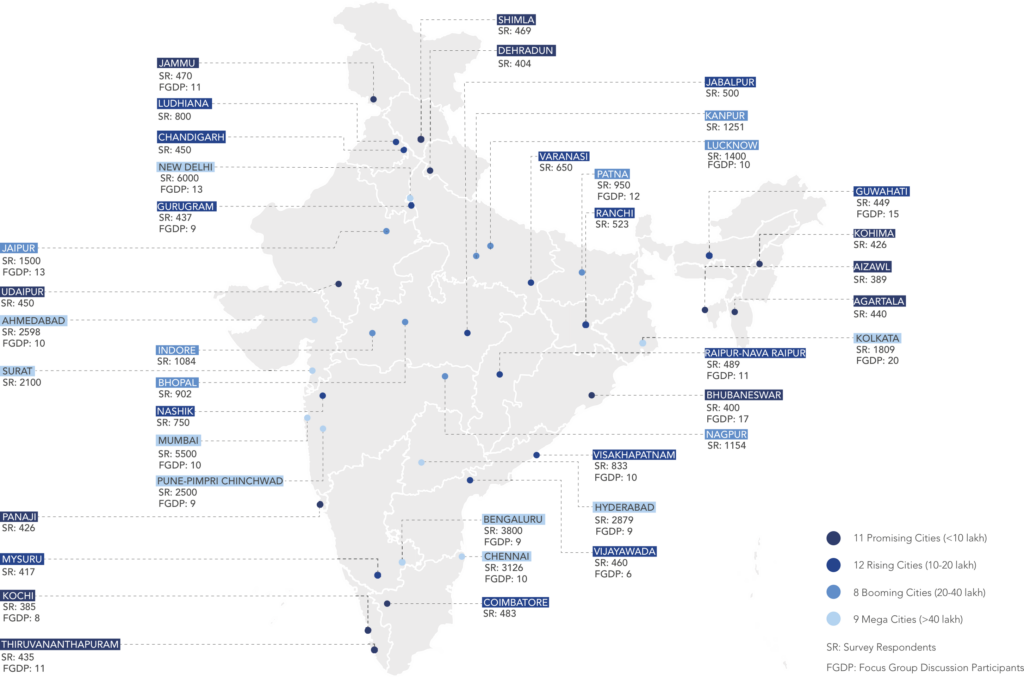
50,488
Survey respondents
12.30 Crores
Projected population of 40 cities
25%
India’s urban population in these 40 cities
20
Focus group discussions involving 226 participants
Participant profile
For the Ease of Moving Index 2022, cities have been chosen based on their population, geographical significance, and status as smart city.
Age
<18 years
<18 -25 years
<26 -40 years
<40 – 60 years
<60 years
Gender
No Data Found
Income
< INR 15,000
per month
INR 15,001 –
30,000 per month
INR 30,001 – 50,000
per month
INR 50,001 –
1,00,000 per month
> INR 1,00,000
per month
Vehicle Ownership
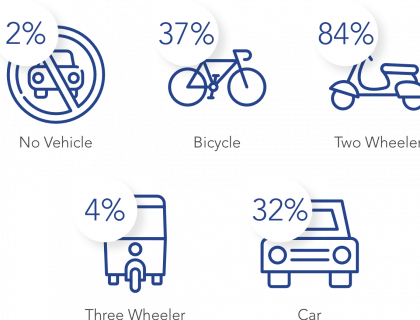
Education Qualification
No Data Found
Occupation
No Data Found
Distribution of disabilities
(Percentage of respondents)
Gender
No Data Found
Profile of the FGD participants
18-50 years old
Age range of FGD participants
Cityzen pulse
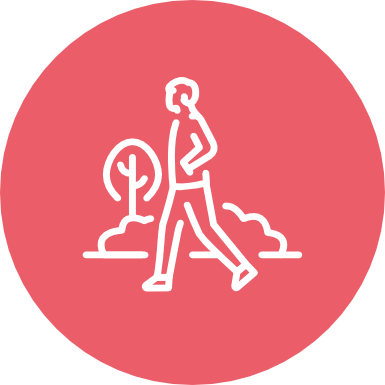
AGARTALA
has the best walking infrastructure
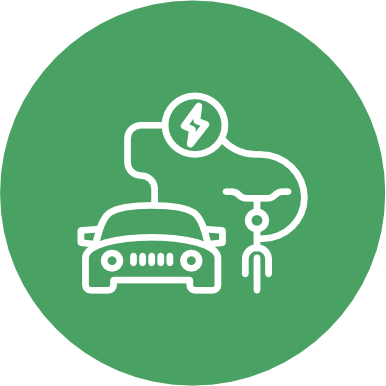
AHMEDABAD
has the highest willingness to adopt electric vehicles

AIZAWL
scores the highest on clean mobility

BHUBANESWAR
has the most seamless mobility system

CHANDIGARH
has the highest ease of parking at major transit hubs

COIMBATORE
has the shortest access time to transit stops

DEHRADUN
can access public transit hubs within 10 minutes using Intermediate Public Transport (IPT)

GUWAHATI
has the lowest instances of petty crimes, such as pickpocketing, in public transport

JABALPUR
Mobility spend is lowest

JAMMU
Most people walk and cycle to access public transport

KANPUR
The safest city to travel on public transport

KOCHI
The highest potential for active and shared mobility adoption

KOHIMA
Almost every one in has a bicycle

KOLKATA
The highest adoption of shared mobility

LUDHIANA
Public transport usage among women and the trans/ non-binary is the highest

MYSURU
The easiest availability of public transport information

NAGPUR
The most efficient and reliable public transport system

PANAJI
The highest usage of apps for delivery services

PUNE
The most inclusive mobility ecosystem

RAIPUR
Almost everyone uses public transport on a regular basis

SURAT
Perceived to have the safest roads

VIJAYAWADA
The most well-lit roads
2022 Results
- Promising Cities
- Rising Cities
- Booming Cities
- Mega Cities
Overall Score: Promising Cities
No Data Found
Cluster Rank

Shimla

Kochi

Bhubaneswar

Udaipur

Agartala

Aizawl

Panaji

Kohima

Dehradun

Thiruvananthapuram

Jammu

Promising Cities
The ‘Promising Cities’ comprises cities with a projected population of up to 10 lakh. The smallest city by population and size is Panaji, the capital of Goa, while the largest in terms of population is Bhubaneswar, the capital of Odisha. Jammu is the largest city in terms of the municipal area. All cities in this cluster- are smart cities.
The cities chosen in the cluster are spread across India, with distinct terrain, weather/climate, and diverse mobility needs. Four cities (Bhubaneswar, Jammu, Kochi and Kohima) of the eleven cities in the cluster were also a part of the EoMI 2018. Except Kochi and Udaipur, all the cities in the cluster are administrative capitals of respective states.
Overall Score: Rising Cities
No Data Found
Cluster Rank

Coimbatore

Guwahati

Ludhiana

Nashik

Varanasi

Raipur

Chandigarh

Gurugram

Ranchi

Vijayawada

Mysuru

Jabalpur

Rising Cities
The ‘Rising Cities’ comprises cities with a projected population between 10 lakh to 20 lakh.
The smallest city by population is the planned city of Chandigarh, while the largest is the wine capital of India, Nashik.
Among the twelve cities mentioned in this cluster , three cities (Jabalpur, Mysuru, and Vijayawada) were also part of EoMI 2018. Four (Chandigarh,
Raipur-Nava Raipur, Guwahati and Ranchi) are administrative capitals and nine are smart cities (except Gurugram, Mysuru and Vijayawada). The other cities have distinct attributes and are
strategically significant.
Overall Score: Booming Cities
No Data Found
Cluster Rank

Indore

Nagpur

Bhopal

Lucknow

Visakhapatnam

Patna

Kanpur

Jaipur

Booming Cities
The ‘Booming Cities’ comprises cities with a projected population between 20 lakh and 40 lakh.
The smallest city in this cluster by virtue of population is Visakhapatnam, while the largest is Jaipur, the capital of Rajasthan.
Four of the eight ‘Booming Cities’ (Bhopal, Indore, Jaipur and Patna) were part of EoMI 2018.Except Visakhapatnam, all cities in the cluster are in the north and central part of
the country and four cities (Bhopal, Jaipur, Lucknow and Patna) are also administrative capitals of respective states. All cities in this cluster are smart cities.
Overall Score: Mega Cities
No Data Found
Cluster Rank

Pune

Mumbai

Hyderabad

Bengaluru

Surat

Chennai

New Delhi

Ahmedabad

Kolkata

Mega Cities
The ‘Mega Cities’ comprises the nine metropolitan areas with a projected population of over 40 lakh.
All except the twin cities of Pune-Pimpri Chinchwad were part of EoMI 2018.
Delhi and Mumbai are the most populated cities in the cluster while the diamond city – Surat, is the smallest. This cluster also has six smart cities (except Kolkata, Hyderabad
and Mumbai).
See how mobility has evolved from 2018 till now
OMI Foundation introduced the Ease of Moving Index to assess city mobility. The 2018 edition gauged 50 indicators across People, Infrastructure, and Sustainability. Analysing data from 43,500 respondents in 20 cities, it informed urban decision-making. The 2022 edition assessed 41 indicators from 50,000 respondents in 40 cities, stratifying samples by gender, ability, and income. Both editions aimed to evaluate mobility, infrastructure, and public transport to empower city authorities with information to help take the data driven decisions towards sustainable mobility. A comparison of citizens’ mobility patterns and perceptions from 2018 to 2022 is presented here.
- Personal Mobility
- Public Transport Users
- Public Transport Affordability
- Public Transport Reliability
- Public Transport Comfort
- Public Transport Cleanliness
Personal Mobility
Personal mobility adoption has picked up pace in India over the past two decades, even a cursory look at the Vahaan portal – hosted by the Ministry of Road Transport and Highways providing almost real time vehicle registrations updates from Road Transport Offices spread across the country, will reflect this. A comparison of mode share of personal vehicles among respondents between 2018 and 2022 shows a similar trend.No Data Found
Public Transport Users
What is heartening to note here is public transport adoption has also risen over the last four years, despite popular belief that the pandemic would have prompted commuters to prefer personal transport. 9 out of the 18 cities covered in the two editions have recorded an increase in public transport usageNo Data Found
Public Transport Affordability
Perception of public transport being affordable has reduced though. There are a number of factors which influence public transport fares like the cost of fuel, and higher tariff for newer mass transit modes such as the metro. The average travel distance also varies in each cityNo Data Found
Public Transport Reliability
Reliability is a mixed bag, perhaps due to inadequate number of public buses since 2018. While the rail based mass transit has increased, in many cities it is still under construction and only part of the network is open. Real time information and adequate buses for frequent service will enable better adoption of public transport.No Data Found
Public Transport Comfort
Perception of public transport being affordable has reduced though. There are a number of factors which influence public transport fares like the cost of fuel, and higher tariff for newer mass transit modes such as the metro. The average travel distance also varies in each cityNo Data Found
Public Transport Cleanliness
Reliability is a mixed bag, perhaps due to inadequate number of public buses since 2018. While the rail based mass transit has increased, in many cities it is still under construction and only part of the network is open. Real time information and adequate buses for frequent service will enable better adoption of public transport.No Data Found
